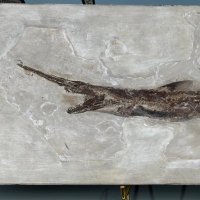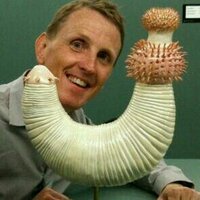
ChaSE (Chalk Sea Ecosystems) Project
@chalkseaeco
@NERCscience project investigating ecosystem response to climate change in the Cretaceous Period. Based @NHM_London, @UCL.
ID: 1721851026796351488
http://chalksea.co.uk 07-11-2023 11:24:25
69 Tweet
288 Followers
93 Following

Delighted to see our work on ammonoid diversification out today in Nat Comms, along with some stunning artwork by Callum Pursall (DM for commissions) for the press releases. We know that diversity varied around the globe, so the drivers of diversity must also have shown similar spatial variation 1/n

Here are some #ammonites we've found on recent fieldwork to the Chalk of Devon and East Sussex. This #FossilFriday check out the new paper by James Witts, Joseph Flannery Sutherland & colleagues looking at the diversity of this group throughout the Late Cretaceous Nature Communications! 🐚🦑




This week the new Natural History Museum Gardens officially opened to the public. Featuring a 'walk through geological time'! Come and relax on a #Chalk bench (Ulster White Limestone Fm.), learn about #nannofossils and the chalk seas, and ponder the unusual Paramoudra #flints. 🤔





Last week we said farewell to ChaSE Curator Kim Chandler 🐿 who has done an amazing job providing curatorial support for our project! Wishing Kim good luck in her new job looking after collections Dublin's Dead Zoo (probably with 99% less time getting covered in chalk dust.. 😉).


#MolluscMonday - a slice of Cenomanian #Chalk seafloor Natural History Museum feat. the belemnite Peaeactinocamax primus. These are fossilised internal skeletons of cephalopods related to modern 🐙. This species is rare in the UK, probably because it preferred cooler water temperatures.




#FossilFriday this week features beautiful specimens of the lobsters Palaeastacus sussexiensis and Glyphea willetti from the #Chalk, now in Natural History Museum collections looked after by Richie Howard



#MaastrichtianMonday James Witts and Prof. Andy Gale from ChaSE are in Maastricht 🇳🇱, presenting a poster at a meeting celebrating 175 years since Andrè Dumont first described the original type section for this stage of the #Cretaceous!













